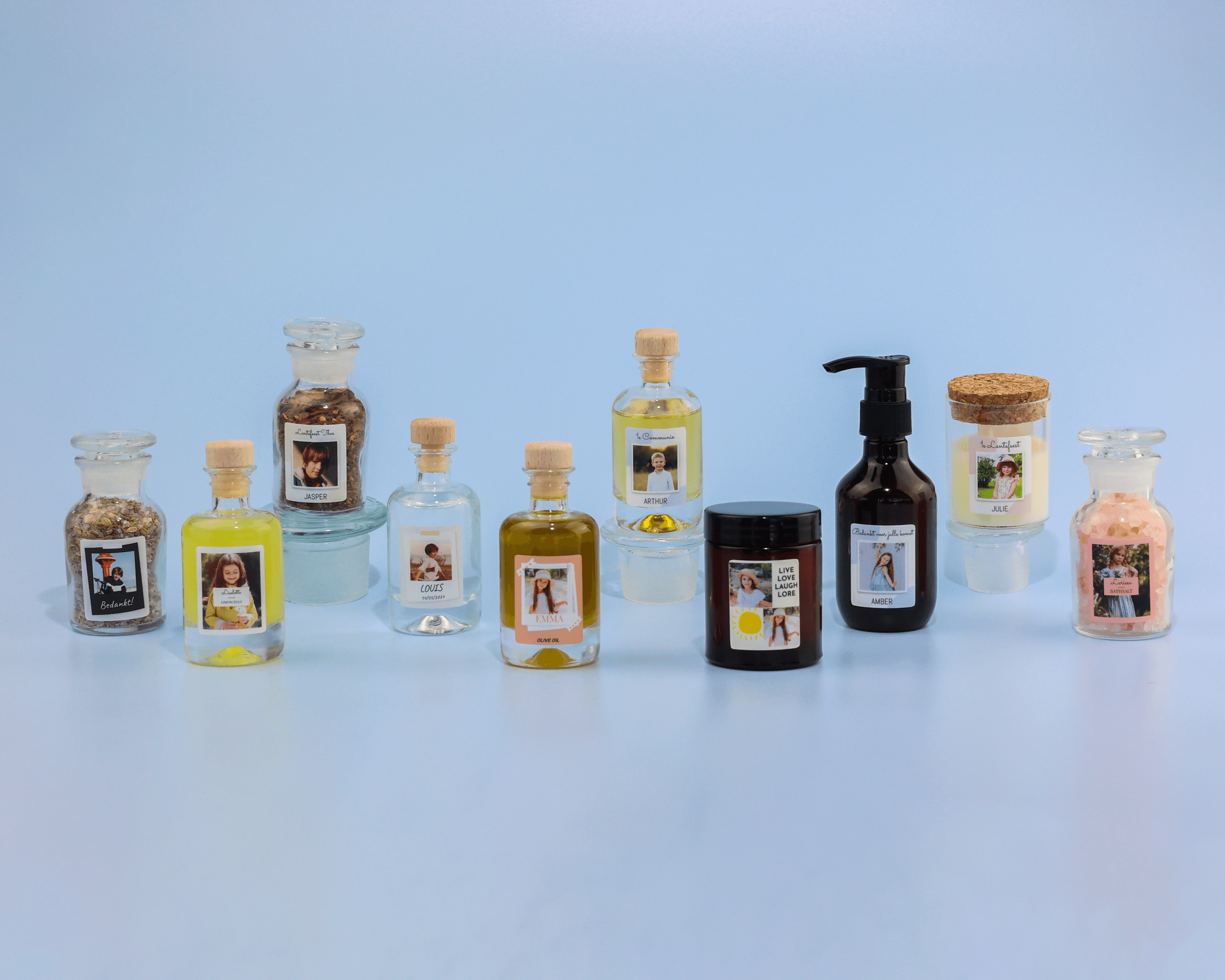Communion and Spring Party Favors
Our communion thank you gifts combine personal touch with creativity, so immerse yourself in personalised communion thank you gifts. This is the ultimate way to show your gratitude and give your guests a personal memento of your little communicant.
Unique Communion and Spring Party Favors: Personalised Drink Bottles
Looking for a unique communion or spring party thank you? Choose personalised bottles of drinks such as limoncello, vodka, rum, gin with a photo of your child. A tasteful, personalised gift that will make the special day unforgettable.
Decorate your communion party with cute communion favors
Thank guests at your communion party with unique, personalised thank-you gifts. A beautiful addition that serves as a vibrant communion thank you, perfect for any child.
Why choose personalised communion thank yous?
A communion or spring celebration is a milestone in a child's life. It is a day full of celebration, joy and gratitude. Personalised communion thank yous are a wonderful way to show your appreciation to the guests who share this special day with you.
How do you make your communion thank yous unique?
Personalising your communion thank yous is a creative way to make a lasting impression on your guests. You can do this by adding your child's name, the date of the communion, or even a special message. So choose our personalised mini bottles of gin as a possible thank-you gift for your communicant.
Inspiration for unique communion thank you gifts
Looking for inspiration for your communion thanks? Consider a personalised beer pack for the adults, or non-alcoholic gin for the younger guests. Our organic scented candles and hand soaps also make wonderful, useful gifts that your guests can keep using.
Communion thank yous for every taste and budget
When planning a communion or spring party, it is important to consider different tastes and budgets. Our selection of premium, personalised products offers options for every style and price range. Whether you are looking for something simple and affordable, or something luxurious and extravagant, we have the perfect communion thank yous for you.
How do you find a nice communion gift?
When choosing your communion thank yous, you want to make sure you get the best products. Feel free to take a look at our website and choose the perfect gift. Our premium, personalised products are high quality, durable and stylish. Moreover, they are fully customisable, so you can match them with personality and style.
A unique communion favor for everyone
Personalized communion favors are a wonderful way to show appreciation to everyone celebrating this special day with you. For the godfather and godmother, you can choose an exclusive gift, such as a personalized wine set or a luxurious scented candle. Don’t forget our premium olive oil and balsamic vinegar—there’s something for everyone!
The importance of quality in communion thank yous
A communion or spring party is a special occasion that will be remembered for a long time. Therefore, it is important to ensure that the thank yous you choose for your guests are of high quality. Our premium products are carefully selected and crafted with attention to detail, resulting in gifts that are as special as the day itself.
Create lasting memories with personalised communion thank yous
A communion or spring party is a moment to cherish. By giving personalised thank yous, you create a tangible memory of this special day. A hand soap with your child's name, or a bottle of wine with a special message, will keep the memory of this day alive long after the party is over.
Enjoy the day with our beautiful spring party thank yous
A communion or spring party is all about celebrating the day and enjoying the moment. With our beautiful, personalised communion thank yous, you can do this without worrying about the details. Let us help you create beautiful memories your guests will cherish.

